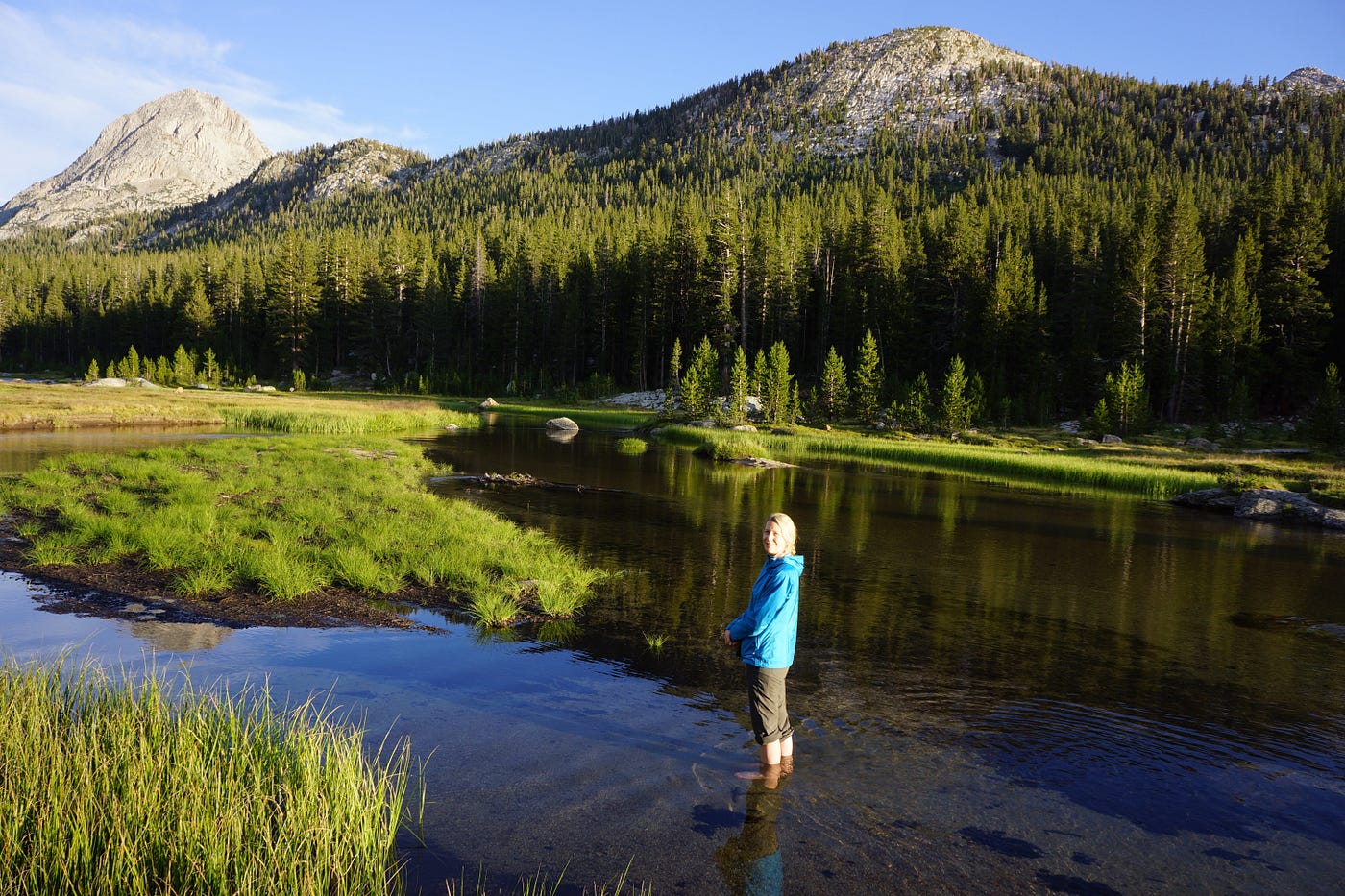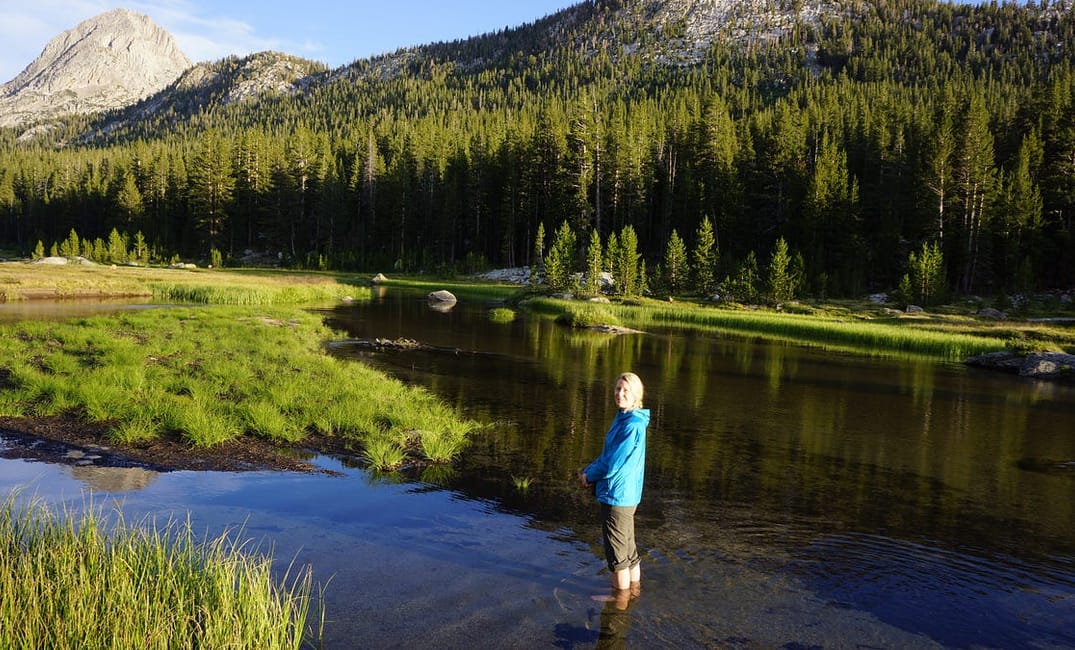
In the past week, a million acres of California have been consumed by wildfire. This scale is hard to imagine, and it’s only through video, analogies (an area larger than the state of Rhode Island), satellite images (yes, that’s smoke streaking across the United States), and maps of abstracted red dots can we grasp the enormity of these fires. But if you live here, you’re not just trying to grasp the scale of these fires. You’re trapped indoors, where it smells like a campfire, sleeping four to a room with the air purifier and forecasting when the air will go from “purple” to “orange” so you can run to the store (if you’re lucky enough not to be evacuating).
But while Californians have been trying to keep up with the news and keep our families safe, our hearts are also breaking. Those aren’t just red dots on a map. That dot was a willow-shaded creek where my dad took me to fish; another was fern-filled redwoods where we felt deep time; that one was the seashore where we went tide-pooling and ran through the dunes; another is the oak-covered hills outside my aunt’s dining room in Vacaville; and on and on and on.
Each red dot on a fire map is a real place with homes or trees or rivers; each dot is the site of thousands of experiences and memories.
Only on this Sunday, after a week of including smoke management into our pandemic lifestyle of Zoom meetings and homeschooling, have I let myself feel the grief. Grief for the people losing their homes and lives, for the wild animals, for the oak glens and redwood forests that vanished in the past seven days. And for myself. For the destruction in each of those red dots is the loss of a place that provided inspiration, solace, memory. Place defines and shapes us. Place is both the backdrop and the quiet supporting character in the story of our lives. Place for me is not just personal but professional, my countless hours in California’s wild places inspiring me to become a scientist. Losing that poppy field I used to go to with my dad each spring feels like losing an estranged but beloved friend: We may have lost touch, but I always thought I’d see them again. This week contains the loss of so many old friends.
Sign up for The Bold Italic newsletter to get the best of the Bay Area in your inbox every week.
But grief is not the only emotion I’m feeling. There is fear. Not just the very real fear of having to grab a go bag and evacuate, but of what the future may look like in my Golden State. Have we accepted that each fall will be a “fire season” where we’ll live in toxic smoke? Are we all going to have a “fire gear” bin in the garage of N95 masks and air purifiers next to the bin of Christmas decorations? But beyond annual inconvenience, I fear that my home, the place that I love, will cease to exist: coastal redwoods and lichen-covered oaks and Sierra meadows all ash and cinder.
Then there is anger. This California landscape made me a scientist. And the science tells us it didn’t have to be this way. Yes, fires are a natural part of the cycle of this landscape and were even a tool utilized by the Indigenous peoples who stewarded this land for tens of thousands of years. But the fire seasons we are experiencing now are almost certainly due to human-induced climate change. Since records have been kept, the five warmest years in California have been from 2014 to 2018. If you want to personalize it, plug your hometown into this interactive tool from the New York Times to see how much it’s warmed. This dramatic increase in temperature has been coupled with a 30% drop in precipitation since 1980. These hot, dry conditions greatly increase the chance of wildfire. Climate change increases the chance of wildfire in other ways, from extreme lightning events to larger fires. While as a scientist, I qualify my statements about the link between climate change and my blazing state with “likely” and “probable,” as someone born and raised here, I see and feel the impact of climate change.
Climate change is not the only reason there has been an increase in wildfires. Dramatic population growth has more people living in the “urban-wildland” interfaces that were always more prone to burn. And people bring sources of ignition: the downed power lines that caused the tragic Camp and Kincaid fires, the illegal campfire that led to 257,000 acres burning in and around Yosemite. Like many natural disasters, wildfires are a complex interplay of factors across scales: climate, people, winds, policy.
So, what are we Californians to do? On this Sunday morning, I’m going to embody a California stereotype and let myself feel my feelings. (Picture me on a meditation cushion in a redwood grove that has not yet burned.) I’m going to let myself be angry, because this shit is really damn depressing. (I’m channeling the John Goodman expletive-filled rampages about Hurricane Katrina from Treme, apt Covid-19-era watching.) The landscape that has inspired, nurtured, and fed us is in flames. Our throats hurt, our eyes sting, our children can’t go outside. And the tragedy is it didn’t have to be this way. Decades of greed-driven policies from fossil fuel subsidies to residential zoning have “probably” put our state in flames. And I’m going to let myself be sad. Sad that this week we lost the poppy fields around Lake Berryessa, the redwood groves of Big Basin, the forests around Putah Creek. I’m going to let myself feel sad that we live in a country where we can’t seem to do the right thing, from banning coal to wearing masks.
But tomorrow I’ll let this pain drive purpose. I’ll recommit to supporting the upcoming election in any way I can, getting people to vote so we have a government that addresses climate change. I’ll learn more about what needs to be done to change zoning laws on the urban-wild interface, to support Cal Fire, to bury power lines, to drive research on fire management.
California is expensive and crowded. Sometimes, when I’ve been touring dilapidated public schools, sitting in gridlock on the freeway, or contemplating the cost of a single-family home, I wonder if I’m crazy to stay here. But for all the crazy, I love this wild, gorgeous state. A state where within a few hours you can smell sea spray in a tide pool full of anemones, dip your feet in a snow-fed river, walk through mossy redwoods, or pick a warm, ripe anything you can imagine from a field. This is a state of wonder. It is a state of wild beauty. It’s a place that has inspired and defined people for tens of thousands of years. It’s our attic full of memories, our best friend, our breadbasket, our teacher.







